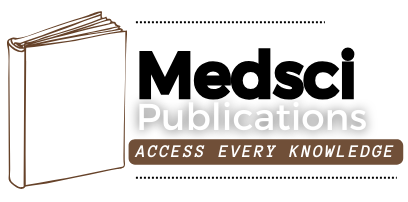Effect of mHealth Communication on Modifiable Risk Factors of Non-Communicable Diseases in An Adult Rural Population of District Gautam Buddha Nagar, Uttar Pradesh
DOI:
https://doi.org/10.55489/njcm.160220254719Keywords:
Non-Communicable Diseases, mHealth communication, Modifiable Risk factors, Rural populationAbstract
Introduction: Non-communicable diseases (NCDs) are responsible for 74% of all deaths globally. Burden of NCDs can be reduced by decreasing the modifiable risk factors associated with these diseases through behavioural change which can be done by the use of mHealth communication. Objectives: To assess the effect of mHealth communication on modifiable risk factors in an adult rural population of District Gautam Buddha Nagar, Uttar Pradesh.
Methodology: A Community-based Interventional study was conducted among 480 adult subjects in the rural area of District Gautam Buddha Nagar, Uttar Pradesh. Baseline information on sociodemographic variables, behavioural risk factors (STEP 1), anthropometric and physiological risk factors (STEP 2), and biochemical risk factors (STEP 3) of NCDs was collected. mHealth intervention in the form of telephone calls and text messages was carried out for reduction of NCD risk factors following which post-intervention data of the risk factors was collected.
Results: After mHealth intervention, significant reduction in tobacco use, alcohol use, unhealthy diet, physical inactivity, BMI, waist hip ratio, blood pressure, fasting blood sugar, total cholesterol, total triglyceride and low-density lipoproteins was observed in intervention group with respect to control group.
Conclusion: Effect of mHealth communication contributed significantly to decrease majority of the modifiable risk factors of NCDs.
References
Non-Communicable Diseases. Geneva: World Health Organization. Available at: https://www.who.int/news-room/fact-sheets/detail/noncommunicable-diseases. Accessed on April 16th 2024.
South East Asian Region. Non-Communicable Diseases. Geneva: World Health Organization. Available at: https://www.who.int/southeastasia/health-topics/noncommunicable-diseases. Accessed on April 16th 2024.
Tripathi S, Pathak VK, Lahariya C. Key findings from NFHS-5 India report: Observing trends of health indicators between NFHS-4 and NFHS-5. J Family Med Prim Care. 2023; 12(9): 1759-1763. DOI: https://doi.org/10.4103/jfmpc.jfmpc_377_23 PMid:38024897 PMCid:PMC10657051
Duncan M, Vandelanotte C, Kolt GS, et al. Effectiveness of a web-and mobile phone-based intervention to promote physical activity and healthy eating in middle-aged males: Randomized Controlled trial of the ManUp study. J Med Internet Res 2014; 16(6):e136. DOI: https://doi.org/10.2196/jmir.3107 PMid:24927299 PMCid:PMC4090375
Annual Report 2011-12. Department Of Telecommunications, Ministry Of Communications & Information Technology, Government Of India, New Delhi. Available at: https://dotws.cdot.in/sites/default/files/AR%20Englsih%2011-12_0.pdf?download=1 Accessed on April 15th 2024.
Müller AM, Alley S, Schoeppe S, et al. The effectiveness of e-& mHealth interventions to promote physical activity and healthy diets in developing countries: A Systematic review. Int J Behav Nutr Phys Act 2016;13(1):109. DOI: https://doi.org/10.1186/s12966-016-0434-2 PMid:27724911 PMCid:PMC5057225
Srivastav S, Mahajan H, Goel S, et al. Prevalence of risk factors of noncommunicable diseases in a rural population of district Gautam-Buddha Nagar, Uttar Pradesh using the World Health Organization STEPS approach. J Family Med Prim Care 2017; 6(3):491-7. DOI: https://doi.org/10.4103/2249-4863.222027 PMid:29416995 PMCid:PMC5787942
Prestwich A, Perugini M, Hurling R. Can implementation intentions and text messages promote brisk walking? A randomized trial. Health Psychol. 2010; 29(1):40-9. DOI: https://doi.org/10.1037/a0016993 PMid:20063934
Haapala I, Barengo NC, Biggs S, et al. Weight loss by mobile phone: a 1-year effectiveness study. Public Health Nutr. 2009;12(12): 2382-91. DOI: https://doi.org/10.1017/S1368980009005230 PMid:19323865
Pfammatter A, Spring B, Saligram N, et al. mHealth Intervention to Improve Diabetes Risk Behaviors in India: A Prospective, Parallel Group Cohort Study. J Med Internet Res. 2016;18(8): e207. DOI: https://doi.org/10.2196/jmir.5712 PMid:27496271 PMCid:PMC4992169
Thakur JS, Jeet G, Nangia R, et al. Non-communicable diseases risk factors and their determinants: A cross-sectional state-wide STEPS survey, Haryana, North India. PLoS One. 2019;14(11): e0208872. DOI: https://doi.org/10.1371/journal.pone.0208872 PMid:31774812 PMCid:PMC6881003
Shankar H, Singh V, Singh TB. Linkage between Behavioural and Physiological Risk Factors with Type 2 Diabetes Mellitus in Rural Varanasi, India. Int J Contemp Med Res . 2019; 6(5): E1-5. DOI: https://doi.org/10.21276/ijcmr.2019.6.5.39
Krishna S, Boren SA, Balas EA. Healthcare via cell phones: a systematic review. Telemedicine and e-Health. 2009;15(3):231-40. DOI: https://doi.org/10.1089/tmj.2008.0099 PMid:19382860
Partridge SR, K, Hebden L, Balestracci K, et al. Effectiveness of a mHealth Lifestyle Program With Telephone Support (TXT2BFiT) to Prevent Unhealthy Weight Gain in Young Adults: Randomized Controlled Trial. JMIR Mhealth Uhealth. 2015; 3(2): e66. DOI: https://doi.org/10.2196/mhealth.4530 PMid:26076688 PMCid:PMC4526939
Downloads
Published
How to Cite
Issue
Section
License
Copyright (c) 2025 Ankita Makhija, Shalini Srivastava, Harsh Mahajan, Khushboo Juneja

This work is licensed under a Creative Commons Attribution-ShareAlike 4.0 International License.
The authors retain the copyright of their article, with first publication rights granted to Medsci Publications.










